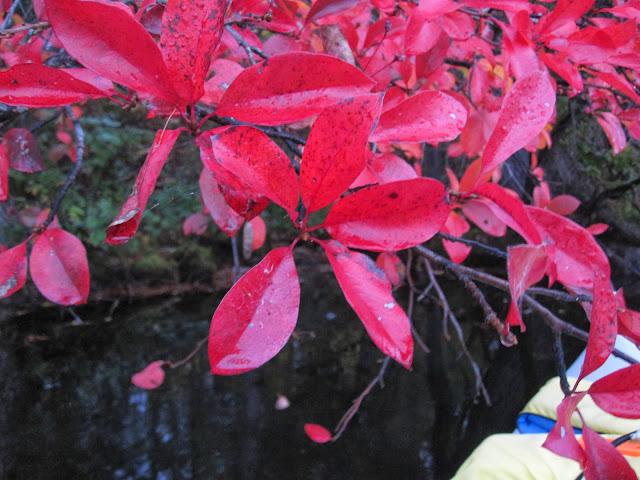And the hardy, low growing plants also often get decorated with the frost.
This year, I found a flower still blooming - a clover blossom.
 |
| Ice Crystals on a Clover Blossom |
The tiny structures on the flower allowed some extraordinary cystals to grow, probably seeded by those structures, and then additional molecules fell into place in the crystal lattice.
Chemistry in action!
Hopefully the cold weather will finally kill off the undesirables - biting insects that it. I thought tic season was well behind us, but I had this nasty visitor come home with me.
 |
| Deer Tic |
The most disturbing part is that this is a Deer Tic, which I have not see before at Lake Wicwas. I know they are in the area, but this is the first one I have seen myself. Maybe it's fate - it was on the same trip where I saw a couple of deer grazing out on one of the islands.
I haven't seen many beaver trees cut down around the lake yet this fall, but there is some very recent action at the beaver dam on the Blue Trail that connects to the Yellow Trail in the Hamlin/Eames/Smyth area. This cut is right next to the trail, and the beaver didn't calculate his angles well, as the tree got caught up in the branches of a neighboring White Pine.
It had tried to free it by dragging the trunk away from the stump, and when that didn't work, it tried cutting off another section. That didn't solve its problem either, and it has been working on cutting off a few more feet (cut section floating in the water).
I felt badly for it, and it was going to fall across the trail eventually anyways, so I gave it a hand and cleared it off the snag so it fell on the ground. I plan to go back to see if the beaver returns and drags the tree away.
In another beaver clearing that was cut two years ago, (October 23, 2013 post) all the stumps now have fungi growing on them. It's interesting how effective fungi are at distributing their spores so well that almost every stump has become a host. These will help breakdown and decompose the stumps more quickly.
 |
| Fungus on a two-year old Beaver Stump |
One more shot of the ice crystals. Soon enough we won't have to go looking for these!









































